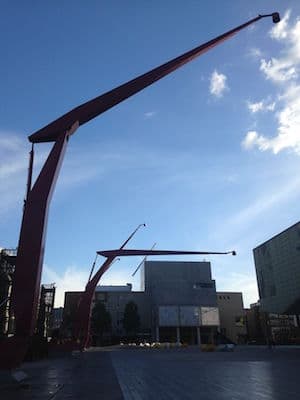With Henry by Itamar Serussi, Scapino Ballet Rotterdam makes an exciting statement. Indeed, the kickoff of the anniversary season is not a corny look back at 70 years of dance history, but stands in the middle of the present and looks ahead. Scapino does so with a relatively unknown choreographer delivering his first full-length work, in an unusual dance style.
Mars
Completely unknown is Israeli Itamar Serrusi. He has been house choreographer at Scapino Ballet Rotterdam for a year. Before that, he was very productive at Dance house Station South. So he has something up his sleeve. Indeed, he is a bit of a hype at the moment and it doesn't have to be long before he gets his own company. With Henry he shows he can handle that too: there is balance and unity in his idiosyncratic, communal work. Moreover, the choreographer seems to sleep in the studio when necessary, so his commitment is also fine.
The morning after

Fifteen airily dressed dancers lie in tufts on a white stage. One stands upright, watching. It looks like Eilat beach, or a Greek party island, the morning after a heavy night. Jean Gabriel Maury begins a powerful solo, on industrial-ambient music by Richard van Kruysdijk. Slowly, more dancers stand up and a collective, thumping community of movement emerges: in waves, dancers join or step out.
The dance is un-Dutch [hints]In Dagblad Wed reads the following: "For more than twenty-five years, the Netherlands has been fertile ground for Israeli dance makers. From 'old hands' like Itzik Galili, until a few years ago one of the leading groups in the Dutch dance scene with his Galili Dance, to the above-mentioned makers, as well as newcomers like Mor Shani, artist in residence at Dansateliers Rotterdam and at ICK Amsterdam. There appears to be a pretty consistent dance line running from Tel Aviv to the Dutch dance clay. And Dutch audiences appear particularly sensitive to the language of dance from the promised land."[/hints]: impulsive, charged, and from the pelvis. There is no vocabulary of stylised movements or measured steps. As a dancer here, you can just walk around, stand still, crawl or jump, and all in a non-academic way. So no penchant for athletic perfectionism. You are actually watching a dance workshop, on a big stage, with an ensemble of very strong dancers. A breath of fresh air that a choreographer working in the Netherlands on a large stage breaks through the doctrine of 'filling every square centimetre with movement'.
The lighting connects as closely as the music. For where sound breaks through its barrier with a bang and ushers in a new phase, a light track acts independently and directs the dancers.
When is dance dance?
Serussi questions conventional ideas about dance. Why does there have to be a plot? Why must everything be ordered to perfection? Yet he does not draw certain conclusions. Because while the dancers are seriously engaged in an introspective universe of memories, they sometimes turn to the audience. This makes the dance less closed. It thus betrays the fact that he is indeed performing something.
Henry with its deconstructed, no-nonsense dance fits well into these times. Young dancers who manifest themselves with guts and interact like loose sand. Henry is dance that is true. Not necessarily finished, pretentious or perfect. It is about the process, the intensity of the movement, the way somewhere.
The word 'Ballet' can now be permanently off the name of the Scapino Ballet Rotterdam.
